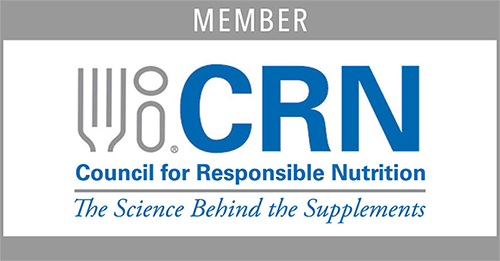We all know the importance of eating a balanced diet packed with fruits, vegetables, and lean proteins while also avoiding sugars, saturated fats, and processed foods to get the nutrients our bodies need. Unfortunately, today’s hectic lifestyles and the cost of natural foods often make it difficult to follow these recommendations, making it hard for American families to get the nutrition they need from food alone.

The History of Vitamins and Deficiencies
In the 1800s, nutritional deficiency-related diseases, such as scurvy, rickets, and beriberi were widespread, but the cause was unknown. It wasn’t until the early 1900s, when Casimir Funk, known as the ‘father of vitamin therapy’, identified what he called ‘vital amines’, which later became known as vitamins. While the discovery and identification of the nutritional importance of these vitamins have played a significant role in treating these nutritional deficiencies, most Americans still do not receive the nutrients they need through diet alone. In fact, a large portion of Americans are deficient in at least one micronutrient essential for immune system health, such as vitamins A, C, D, E, and zinc. These deficiencies can affect growth, increase infection susceptibility, degenerative diseases and so much more.
Barriers to a Nutrient-Packed Diet
The U.S. Department of Agriculture promotes the MyPlate Plan to help Americans see what they should be eating each day to get the calories and nutrients they need. Here you can put in your personalized information and receive a plan that offers examples of how much and different types of fruit, vegetables, whole grains, lean meats, and dairy you should be eating each day. While this site provides a great resource, meeting those recommendations is not an option for many people due to cost and lifestyle barriers.
Higher Food Costs
Food costs play a significant role in the average American diet and the ability to follow the recommended intake of nutrients offered in a MyPlate Plan. For example, in 2017, a study showed that consuming the MyPlate diet cost a family of four between $1,109 to $1,249 per month. Unfortunately, this is not possible for many American families. For example, the average low-income household in 2022 spent just over $5,000 a year on groceries. For those individuals, purchasing a natural food diet is nearly impossible. With a restrictive budget, most low-income families turn to processed foods which provide more calories at a cheaper price but do not meet the nutritional recommendations. In fact, for many Americans, the average diet consists of over 50% ultra-processed foods.
More Frequent Shopping and Food Waste
Following a nutrient-rich diet means including fresh fruits and vegetables in your daily food choices. Unfortunately, unlike processed foods, fresh fruits and vegetables have a much shorter shelf life, often less than a week. When you include fresh fruits and vegetables, it often means you must shop more often, such as at least once or twice a week. With today’s busy schedules, there often isn’t time to work additional shopping trips into the daily routine. For this reason, many pass on adding fresh fruit and vegetables to their menu each week. In fact, the CDC reports that only 1 in 10 adults include enough fruit and vegetables in their diet, making the lack of these foods a big contributor to nutrient deficiency.
In addition, due to short shelf life, fresh fruits and vegetables make up 40% of food waste in the United States. For those on a tight budget, throwing away food is not an option, so fresh fruits and vegetables are often left off the shopping list to save money.
Preparing Nutrient-Packed Meals Takes Time
Food preparation can take anywhere from a few minutes (think breakfast smoothie) to an hour or more for more complex and balanced meals using whole food ingredients. Unfortunately, the hectic schedules of a family can include getting ready for school and work, after-school activities, and much more. These activities take away time from meal preparation, with many opting to go for a quick meal or fast food. In fact, the time the average family spends on food preparation has drastically decreased since the 1960s, with Americans spending on average, 33 minutes a day on food prep and cleanup.
For those with busy schedules, it can be much easier to turn to processed foods that cook in a matter of minutes. Unfortunately, you pay for this convenience with a loss of the nutrients your body needs to thrive.
Allergies and Lifestyle Choices
Allergies and dietary choices also play a vital role in your ability to get the nutrients you need through your diet. Food allergies occur when you consume food your body is allergic to. When your immune system identifies an allergen, it sends out immunoglobulin E or IgE antibodies that trigger an allergic response, causing symptoms such as itching, hives, trouble breathing, vomiting, or diarrhea. Unfortunately, many of the most common food allergies occur with foods that often play a major role in a balanced diet and the nutrients your body needs, meaning you need to find those nutrients through other foods or supplements.
Lifestyle choices, such as the diets you follow, can also inhibit your ability to get the nutrients your body needs. For example, those following a dairy-free diet, whether due to allergies or personal preference, may limit their intake of calcium, as well as vitamin D. The goal of a balanced diet is to ensure you are getting all the nutrients you need so when your diet choices hinder typical nutrient consumption, you must be aware and make dietary adjustments or supplementations to ensure you get what you need.
Allergies
Food allergies are common in the United States, with around 16 million American adults being allergic to at least one food source. When your diet becomes restricted by allergies, it can become more difficult to get the nutrients your body needs from diet alone. In the U.S., the FDA lists the top 9 allergens as milk, eggs, wheat, peanuts, tree nuts, soy, sesame, fish, and shellfish. Here we will look at a few of these and how they can affect your diet.
Milk
Milk is a vital source of many different nutrients that the body needs, including calcium, riboflavin, phosphorus, magnesium, zinc, potassium, and vitamins A, D, and B12. Unfortunately, milk is a top food allergen, leaving many to avoid milk and milk products. In this case, you would want to include other food items, such as meat proteins, whole grains, yellow and orange vegetables, and fortified foods to help replace nutrients normally gained through milk consumption.
Eggs
Including eggs in a balanced diet helps your body get protein, iron, folate, riboflavin, and vitamins A, D, E, and B12. When you have an allergy to eggs, it is important to include other foods in your diet that provide these necessary vitamins and minerals. Good sources can include meats, fish, legumes, fruits, leafy greens, and other vegetables.
Wheat
Wheat is a natural grain found in a wide range of foods including breads, cereals, pasta, and pizza dough. Wheat is packed full of iron, zinc, selenium, chromium, and B vitamins. Unfortunately, for many, wheat is also a source of gluten, which contributes to allergies, intolerances, and an autoimmune disorder known as celiac disease. Celiac disease affects 1 in 100 people worldwide, making it a major allergen. For those with allergies, intolerances, and celiac disease, finding other dietary options, such as other fortified grains like barley, oat, and rye, can help provide the nutrients that wheat offers in a balanced diet.
Soy
Soy, or soybeans, are a legume species originating in East Asia. Soy is the protein found in soybeans. While being one of only a few plant sources of complete protein, soy is also a great source of dietary fiber, calcium, iron, magnesium, and phosphorus. Soy milk is often used by those with a cow milk allergy, however, allergies to soy are also very common. Soy is found in foods such as tofu and soy sauce, but can also be found in baked goods, cereals, and canned tuna. For those following a vegan diet, soy is often used as a protein source. However, if you are allergic to soy, it can make it very difficult to get protein and other nutrients your body needs in your diet alone.
Lifestyle (Diets)
When it comes to lifestyle and nutrients, we look at dietary choices. Whether you are following a specific diet due to medical conditions and allergies, personal choices, or following the latest weight loss trends, there is no shortage of different diets and diet plans available. When nutritionists monitor these diets, it is possible to ensure you get the necessary nutrients. However, when you are following the new weight loss menu on Facebook, chances are that getting the recommended daily nutrient levels is unlikely. While there are too many different diets to mention, here we look at some common diets and the concerns associated with them.
Ketogenic
The ketogenic diet, where carbohydrates are limited in an effort to enter a state of ketosis and promote weight loss, is a popular dietary option. While it can promote weight loss, it also increases your risk of nutrient deficiencies that are commonly found in starchy vegetables and fruits. Leaving these foods out of your diet can reduce the number of certain nutrients, such as beta carotene, magnesium, potassium, and zinc your body receives every day. Increasing your intake of foods like avocados, asparagus, broccoli, Greek yogurt, leafy greens, and nuts can help you get these important nutrients.
Dairy-free
Those following a dairy-free diet are at risk of lower levels of calcium and vitamin D through diet alone. In order to get these nutrients, it is important to add foods that naturally contain calcium and vitamin D. For dairy-free sources of calcium, turn to leafy greens, beans, lentils, nuts, and seeds. For vitamin D, your best source comes from oily fish, such as salmon or sardines.
Gluten-free
As mentioned above, celiac disease affects 1 in 100 people worldwide, meaning a gluten-free diet is more common than you may think. Many of the foods that contain gluten in the U.S. are often fortified with vitamins and minerals, such as bread. Unfortunately, the gluten-free options do not normally contain the added nutrients, making those on a gluten-free diet more at risk of calcium, folate, iron, magnesium, riboflavin, thiamin, and vitamin D deficiencies. Eating foods high in these nutrients, such as leafy greens, beans, lentils, fatty fish, and nuts can help increase your nutrient intake.
With celiac disease, it is common to also have malabsorption issues, so it is important to speak with your physician about potential vitamin deficiencies.
Vegetarian or Vegan
Vegetarians and vegans follow a diet without meat or fish, with a primary focus on fruits, vegetables, grains, nuts, and seeds. While vegans eat no animal products, vegetarians will often still eat eggs and dairy products. When it comes to vegan and vegetarian diets, the biggest nutrient deficiencies seen are calcium, iron, omega-3 fatty acids, protein, and vitamins B12 and D. Including fortified foods in the diet, such as breads and cereals, as well as a variety of fruits, vegetables, beans, and nuts can help provide the nutrients you need. Vitamin B12, however, is a little more difficult because it naturally comes from animal products. If you are vegetarian and eat eggs or dairy products, you are likely getting the b12 you need. However, vegans will need to choose fortified foods with vitamin B12 to get the nutrients they need from their diet.
The Right Multivitamin Can Help Supplement Your Dietary Challenges
Even if a busy lifestyle or food allergies limit your diet, it’s still important to get the nutrients your body needs every day. This is where vitamin supplementation can play a complementary role in your diet. Adding a regular multivitamin or, in cases of deficiencies, a single vitamin supplement (like vitamin D), can help complement a healthy diet and ensure that you are getting all the nutrients you need.



